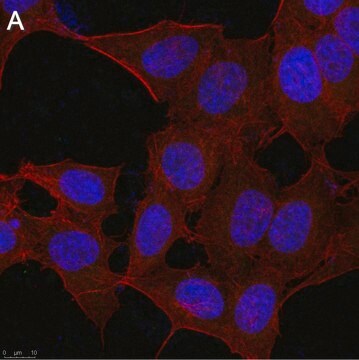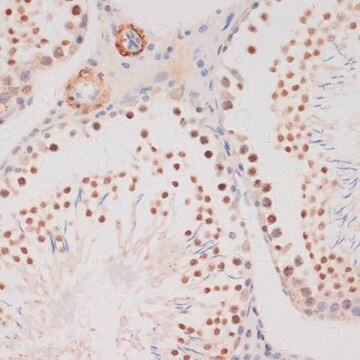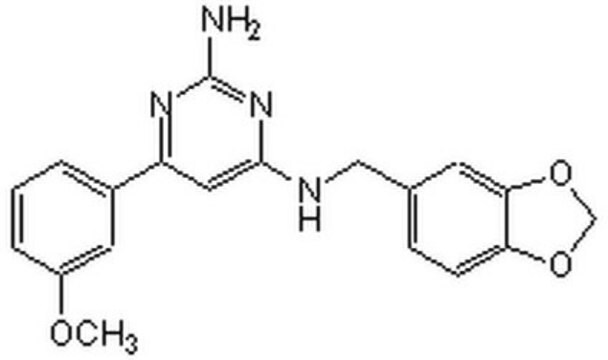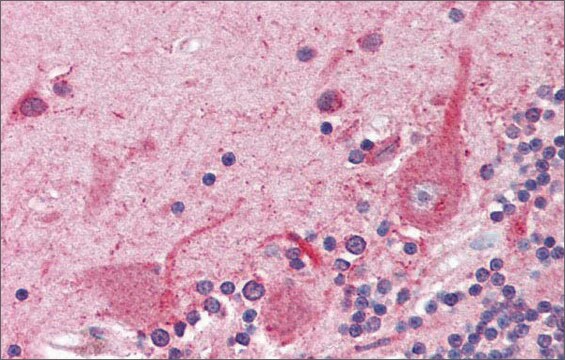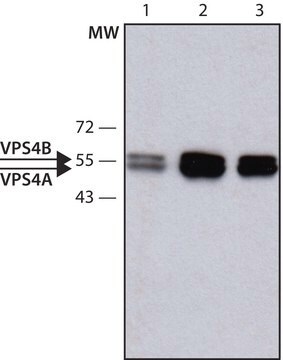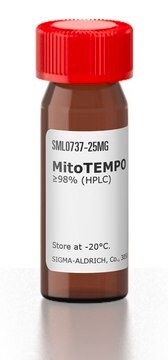ABE387
Anti-ATF4 Antibody
serum, from rabbit
Synonim(y):
Cyclic AMP-dependent transcription factor ATF-4, cAMP-dependent transcription factor ATF-4, Activating transcription factor 4, Cyclic AMP-responsive element-binding protein 2, CREB-2, cAMP-responsive element-binding protein 2
DNA-binding protein
About This Item
Polecane produkty
pochodzenie biologiczne
rabbit
Poziom jakości
forma przeciwciała
serum
rodzaj przeciwciała
primary antibodies
klon
polyclonal
reaktywność gatunkowa
human
metody
ChIP: suitable
western blot: suitable
izotyp
IgG
numer dostępu NCBI
numer dostępu UniProt
Warunki transportu
wet ice
docelowa modyfikacja potranslacyjna
unmodified
informacje o genach
human ... ATF4(468)
Opis ogólny
Immunogen
Zastosowanie
Chromatin Immunoprecipitation Analysis: A representative lot from an independent laboratory detected ATF4 in HEPG2 and MEF cell lysates (Shan, J., et al. (2012). J Biol Chem. 287(43):36393-36403.).
Epigenetics & Nuclear Function
Chromatin Biology
Jakość
Western Blot Analysis: A 1:2,000 dilution from a representative lot detected ATF4 in 10 µg of HisOH treated HepG2 cell lysate (HisOH was used to induce cellular stress mediated eIF2a phosphorylation, allowing for subsequent detection of ATF4. For enhanced performance, end-users may try higher dilutions of this antibody. For better results, 1% SDS was used during the secondary antibody incubation step.)
Opis wartości docelowych
Postać fizyczna
Przechowywanie i stabilność
Handling Recommendations: Upon receipt and prior to removing the cap, centrifuge the vial and gently mix the solution. Aliquot into microcentrifuge tubes and store at -20°C. Avoid repeated freeze/thaw cycles, which may damage IgG and affect product performance.
Komentarz do analizy
HisOH treated HepG2 cell lysate
Oświadczenie o zrzeczeniu się odpowiedzialności
Nie możesz znaleźć właściwego produktu?
Wypróbuj nasz Narzędzie selektora produktów.
polecane
Kod klasy składowania
10 - Combustible liquids
Klasa zagrożenia wodnego (WGK)
WGK 1
Certyfikaty analizy (CoA)
Poszukaj Certyfikaty analizy (CoA), wpisując numer partii/serii produktów. Numery serii i partii można znaleźć na etykiecie produktu po słowach „seria” lub „partia”.
Masz już ten produkt?
Dokumenty związane z niedawno zakupionymi produktami zostały zamieszczone w Bibliotece dokumentów.
Nasz zespół naukowców ma doświadczenie we wszystkich obszarach badań, w tym w naukach przyrodniczych, materiałoznawstwie, syntezie chemicznej, chromatografii, analityce i wielu innych dziedzinach.
Skontaktuj się z zespołem ds. pomocy technicznej
